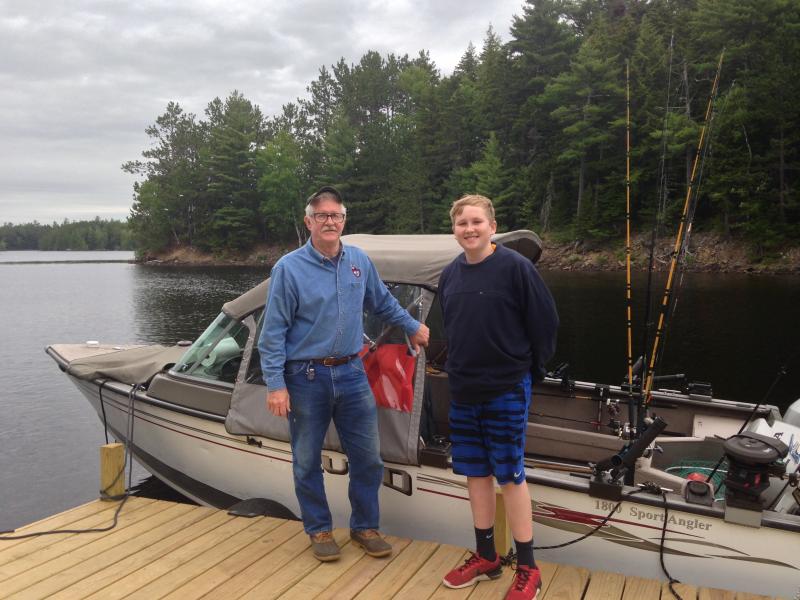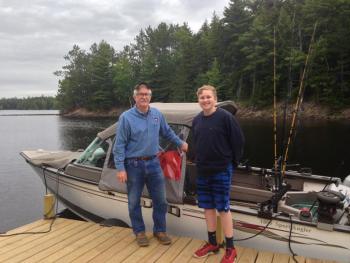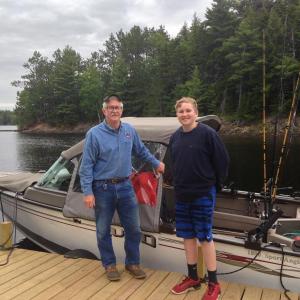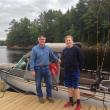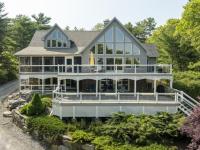A Father’s Day Conversation about Aerial Insectivores
A Father’s Day gift from one of us to the other (it’s probably not too hard to guess who gave the gift and who received it!) sent our son Evan up to Matagamon Lake near Baxter State Park and the Katahdin Woods and Waters National Monument with Jeff last week for a morning of fishing with famed Maine Guide Don Dudley. Don lived up to his reputation and shared much knowledge as the large, lake-dwelling brook trout hits kept coming (all were released). Living on Matagamon Lake as he has for more than 40 years, Don has seen many changes in wildlife populations. One of Don’s observations, when he learned our interests were not confined only to fish, was that he had seen a major drop off in numbers of swallows, chimney swifts, and bats. These are all species that eat insects and catch them all on the wing. Biologists lump them under the term “aerial insectivores.”
Don mentioned how years ago they would routinely see larger numbers of swallows in the area and that during evening drives down the road to Shin Pond he would see bats constantly crossing in the darkening sky in front of the truck. Now he rarely sees a bat all summer and we could give witness to the fact that we didn’t see a single swallow during our morning on the lake.
Another bird family that is in the aerial insectivore group is the nightjars, which includes species like the whip-poor-will and the common nighthawk. Both were once common throughout much of Maine. Grandmother Audrey Giles Chase used to tell the story of the whip-poor-wills that would keep her young family awake on summer nights in the 1940s when they lived in a log cabin that Grandfather John Chase had built in the Edgecomb woods east of Route 27. Many people from across the state share similar remembrances. Common nighthawks were still a pretty common sight around most cities in Maine through the 1970s where they nested on flat, gravel-topped roofs and roamed over the cities at dusk giving their loud buzzy “peent” calls that are sometimes confused with the similar-sounding calls of the American woodcock. Now most Maine birders only see them during spring and fall migration.
Friends Seth Benz and Laura Sebastianelli, working at the Schoodic Point section of Acadia National Park, were fortunate enough to recently discover some nesting common nighthawks on top of Schoodic Head. They were even more fortunate to have been able to record some fabulous and rarely heard vocalizations of the birds.
Studies of population trends in North American birds have found that, as a group, aerial insectivores have shown steep declines apparently beginning in the 1980s and 1990s. The declines have been particularly steep in the northeastern U.S. and Canada. A colleague in Canada, Elly Knight, is working on her Ph.D. studying common nighthawks to try to understand why they are declining. One of the things she has been doing in her research is placing geolocators (those tiny devices that track light levels in order to figure out where the birds have migrated to and from) on common nighthawks in various parts of their range.
There are many hypotheses about what factors may be responsible for the declines in aerial insectivores including broad-scale habitat loss and habitat change, increases in pesticides or airborne contaminants, changes in climate, unknown diseases, and others. The bad news is that we still don’t know what is causing the declines or even if the same factors are responsible in all species.
The good news is that increasing numbers of scientists are working to understand what is happening so we can do what is necessary to ensure that we don’t lose our aerial insectivores.
Jeffrey V. Wells, Ph.D., is a Fellow of the Cornell Lab of Ornithology. Dr. Wells is one of the nation's leading bird experts and conservation biologists and author of the “Birder’s Conservation Handbook.” His grandfather, the late John Chase, was a columnist for the Boothbay Register for many years. Allison Childs Wells, formerly of the Cornell Lab of Ornithology, is a senior director at the Natural Resources Council of Maine, a nonprofit membership organization working statewide to protect the nature of Maine. Both are widely published natural history writers and are the authors of the book, “Maine’s Favorite Birds.”
Event Date
Address
United States

